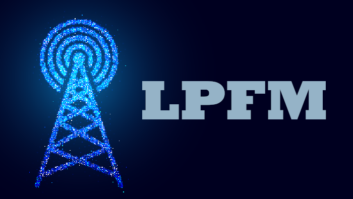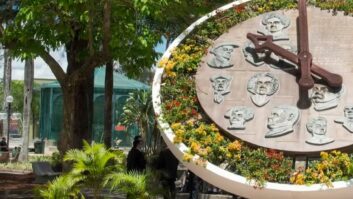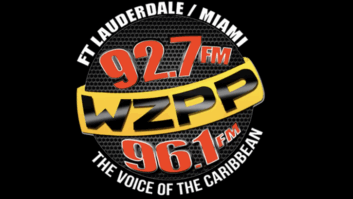Report Seems to Indicate That FM Dial Could Accommodate More LPFM Channel Allocations
The FCC has released a new study that could change the face of FM radio as we know it. Radio World asked me to study the report and share my observations.
The report gives a green light to low — power FM stations that would operate without third — adjacent-channel protection to existing stations, and could open the door to more — lenient assignments of full — power FMs and FM translators. Lab tests also showed LPFMs are not likely to interfere with digital receivers; the HD Radio signals remained robust, Mitre stated.
When Radio World asked about the significance of the report, FCC Media Bureau Chief Ken Ferree said the commission was still gathering public comments and it was too soon to tell what might come of it. Citizen groups and LPFM supporters hope the findings will persuade the agency to relax the channel protection rules and allow more low-power FM allocations in markets.
(click thumbnail)At each test point, engineers turned on the transmitter, measured for interference on each of the receivers in the test van and turned off the transmitter. Each time is counted as a ‘transition.’ This was repeated for each power level. For example, for the auto receiver, the transmitter was turned on and off more than 500 times.
LPFM supporters are likely to lobby Congress to raise the issue again, taking advantage of the current interest around media policy reform. Lawmakers will be focused on upcoming elections, which may or may not help their cause.
As of late July there were 744 LPFM permits issued and 220 stations on the air, according to the FCC.
LPFM’s leap
Former FCC Chairman Bill Kennard, a Democrat, exerted a major effort to push LPFM through in 2000 as an answer to some concerns about radio consolidation. NAB fought those efforts, making LPFM the most heavily lobbied issue for radio, second only to radio issues in the Telecom Act, according to NAB.
The issue doesn’t seem to enjoy the same attentiveness from Republican Chairman Michael Powell.
The “full-power” FM primary stations that were tested for interference were:WCCC, Avon, Conn. (Class B)
WCME, Brunswick, Maine (B1)
KNOW, East Bethel, Minn. (C)
KGAC, Owatonna, Minn. (C1)
KSFM, Winters, Calif. (B)
KFRC, Benicia, Calif. (B)
Six commercially available FM receivers were tested:
Automobile Radio: “Premium” AM/FM stereo receiver, standard equipment in the 2001 Ford Expedition
Home Receiver: Kenwood Model VR-605
Clock Radio: RCA Model RP3755?
“Boom Box”: Sony Model CFD-F5000
Personal Radio: Sony Walkman Model SRF-M35
Subcarrier Receiver: Success Model ML922 RSVI receiver, furnished by Minnesota State Services for the Blind
Broadcasters were pondering the results after the Mitre report was released. One large question is why Mitre did not use an engineering firm that specializes in broadcast issues. A broadcast engineering firm might have approached the test differently. We presume time, money and available resources at the time played parts in this choice.
The report does not say that LPFMs would not cause any interference; rather, it refers to “insignificant interference.” NAB was reviewing the report; a spokesman said it appears the report confirms that some interference would occur as a result of LPFM.
Unanswered so far is what “insignificant interference” means to the average radio station. Most engineers would say any interference is not good.
Directive from the Hill
The interference report has a long history.
On Oct. 25, 2000, Congress passed HR 4942, Section 632(b), which required that the FCC “conduct an experimental program to test whether low — power FM radio stations will result in harmful interference to existing FM radio stations if such stations are not subject to the minimum distance separations for third — adjacent channels.” The result of this study is the recently published 729-page report created by the Mitre Corp.
Mitre designed the tests and selected Comsearch, an Ashburn, Va., telecommunications consulting firm, to perform the field measurements. They were made in the fall of last year at seven individual low-power FM transmitter sites selected to cover a range of geographic, population density, market size and program material combinations.
Comsearch conducted trials in six markets and tested six receivers (see sidebar). The study consisted of LPFM stations operated at power levels of 10 and 100 watts at antenna heights of 3 and 30 meters.
Comsearch submitted its final measurement data report to Mitre in March, along with digital audio recordings of receiver audio made at each measurement location. Mitre studied the field measurements and recordings to determine if signal degradation occurred. A theoretical analysis also was performed to ensure that the measurements were consistent with established engineering principles.
Two antenna heights
Mitre concluded that LPFM stations could be operated on third-adjacent channels with respect to existing primary stations, provided that distance separations were maintained between any LPFM station and receivers tuned to the primary station. These required separations were a few tens of meters in the best case, to slightly more than a kilometer in the worst case.
The engineering firm determined that, for an LPFM transmitter with effective radiated power of 100 watts or less and an LPFM antenna height of 30 meters or less, no harmful third-adjacent LPFM interference would exist outside of an area with a radius of 1,100 meters from the LPFM antenna.
The 1,100-meter separation value applies to LPFM locations that are near the protected contour of the primary station. In other cases where the LPFM station is closer to the primary station, this radius will become much smaller – on the order of tens of meters, to one or two hundred meters, depending on the proximity.
In the measured data, LPFM interference did not strongly correlate with variations in terrain or program material type. Mitre concluded that the measurements also did not show a strong dependence on LPFM antenna height, though only two antenna heights were tested. Perhaps this is true at a test site with flat terrain; but it would be interesting to see if the same conclusion was reached for a mountainous terrain.
In terms of the impact of an LPFM station due to interference on the audience of a primary station, in the worst case measured, the fraction of the protected coverage area of an existing station that would be subjected to harmful interference was 0.13 percent. In most other cases, this fraction was much smaller.
Mitre also looked at the potential impact that third-adjacent LPFM stations might have on digital modulation, or in-band, on-channel digital radio. This study was performed in the laboratory only, and showed that the Ibiquity Digital IBOC system is robust and performed about as well in the presence of LPFM signals as the analog car radio used in the tests.
As a result, interference from LPFM stations to digital receivers is not likely to occur at a distance of more than 130 meters, even at the primary protected contour distance, Mitre noted.
Translation
The engineering company also performed a study to determine the effect of potential third-adjacent LPFM interference to an FM translator. Another interesting choice was that Mitre only tested one FM subcarrier at one location. In the world of interference, FM subcarriers are likely to take a hit first from LPFMs before full-power stations.
During the field tests, the LPFM antenna was placed in the main beam of the translator receiver’s antenna at a distance of about 450 meters. The LPFM power was varied from zero to 100 watts. No harmful interference was seen for an LPFM power of 2 watts or less at that distance, in the main beam of the translator receiver.
Regarding interference to FM subcarriers, often used for radio reading services and other ancillary services, there was no significant LPFM interference to the radio reading services receiver when it was located more than 80 meters away from the LPFM antenna. However, at some distances greater than 80 meters, the radio reading service signal was degraded even in the absence of LPFM transmissions.
In some ways, the Mitre report is the Seventh Wonder of Broadcast Engineering – the data analysis is deep and exhaustive. However, it lacks a “real-world” touch.
For example, I can’t agree with the Mitre conclusion that antenna height has no strong effect on interference. This is only true if antenna height doesn’t affect signal propagation, which runs counter to the well-established FCC F(50,50) curves. Incidentally, Mitre came to this conclusion from testing only two antenna heights, the tallest being 30 meters.
Mitre determined signal degradation by recording field audio and listening to it back in the lab. Audio degradation was then noted as “significant” or “non-significant.” It is not known if Mitre measured the status of the primary station stereo pilot, or reviewed the audio for transitions from stereo to mono, as might occur in interference scenarios.
Also, FM subcarriers would be more susceptible to adjacent-channel interference than program audio. Mitre made its broad conclusion on interference to subcarriers based only one test scenario of a 67 kHz audio subcarrier.
If I were Mitre, I would first hire a good broadcast engineering consultant to help design the tests. I would take more measurements and would definitely include a test site in a mountainous area and one in an area plagued with multipath interference.
I also observed an inconsistency in terminology. The protected contour of the full-power primary station in each test area is sometimes referred to in the report as the “protected F(50,50) contour” or “protected service contour,” but is more often referred to only as the “F(50,50)” contour. This lack of consistency in terminology is confusing to the reader, with the latter description being virtually useless.
Because many of the measurements are referenced to these contours, a more definitive description would be of the formats used by the FCC, such as “1 mV/m F(50,50) contour” or “60 dBu F(50,50) contour,” which contain the reference signal strength parameter. Also, because this nomenclature is not rigorous and because several different classes of stations were tested, the reader is left to guess whether Mitre used the correct field strength for the “protected service contour” calculation.
The Mitre report is available online at www.fcc.gov/cgb/ecfs under MM Docket No. 99-25. Public comments are due Sept. 12.
Leslie Stimson contributed to this report.
RW welcomes other points of view





